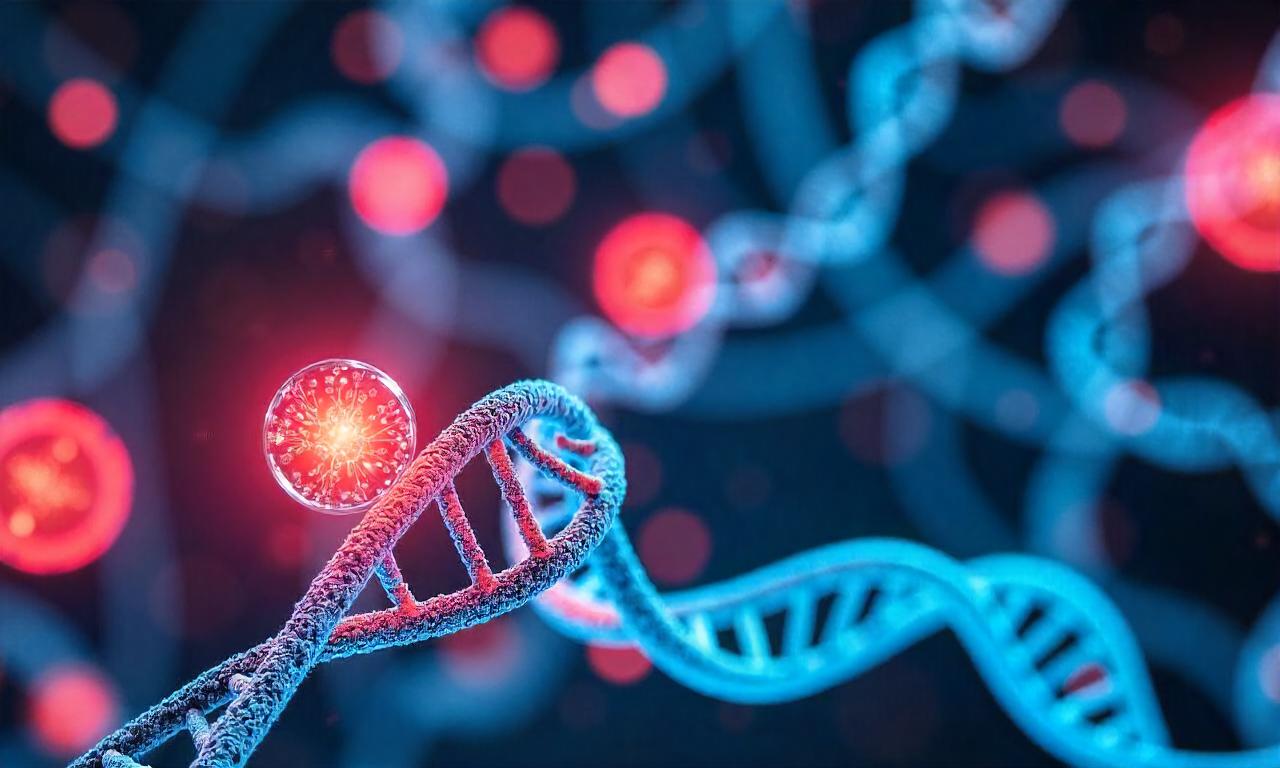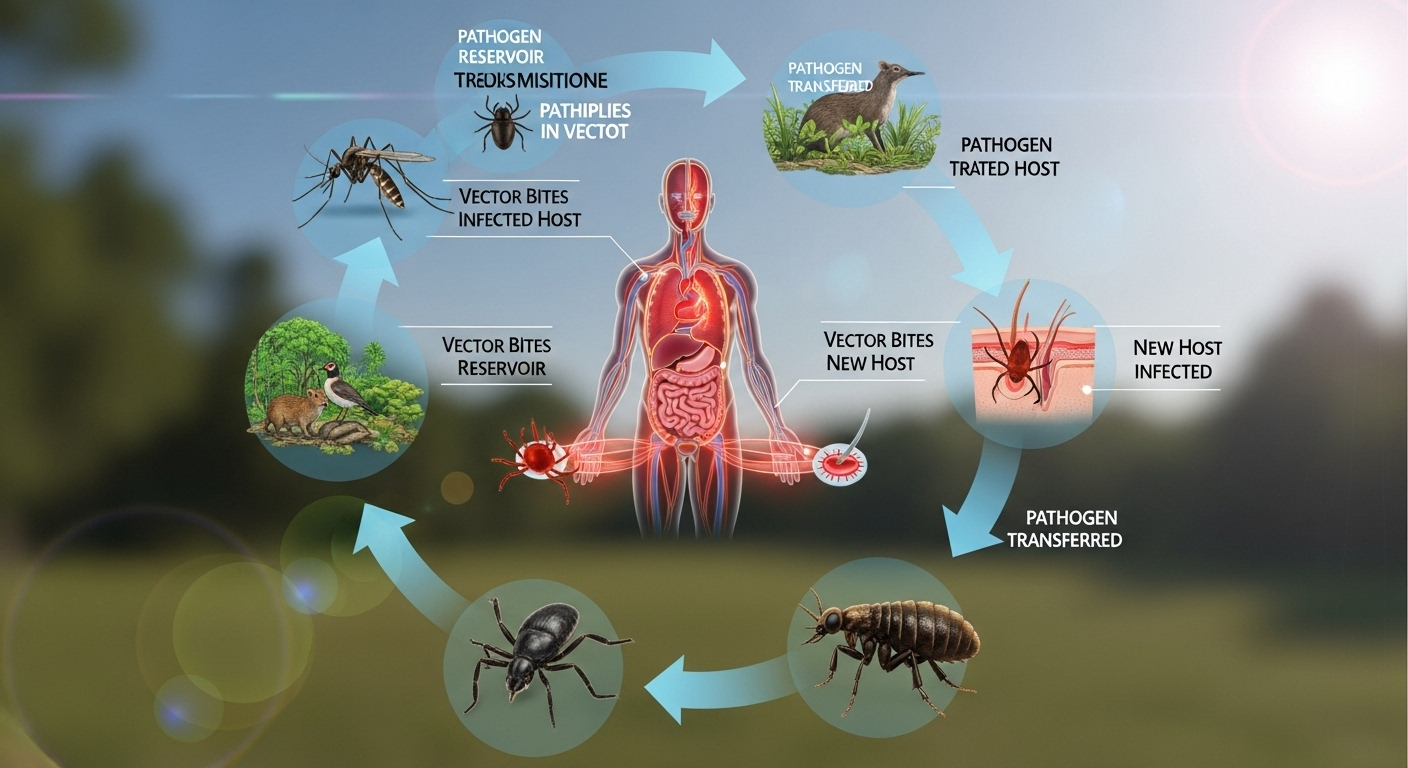What is considered a rare genetic disorder is a condition that affects a small percentage of the population, typically fewer than 1 in 2,000 individuals, according to the World Health Organization (WHO) and the U.S. Food and Drug Administration (FDA). These disorders are often overlooked due to their low prevalence, yet they have significant implications for those affected, their families, and the healthcare system. Rare genetic disorders are caused by mutations in a single gene or multiple genes, and they can manifest in various ways, from physical abnormalities to neurological and metabolic issues. Understanding these conditions is essential for improving diagnosis, treatment, and support systems for patients. This article explores the definition, classification, causes, symptoms, and importance of rare genetic disorders, while also addressing common questions and providing a comprehensive overview for readers.
Table of Contents
ToggleDefinition and Scope
Rare genetic disorders are inherited conditions that occur infrequently in the population and are often caused by changes in DNA sequences. These disorders are distinct from common genetic conditions, which are more frequently observed and may have a higher chance of being passed down through generations. The rarity of these conditions makes them challenging to study, as they require large sample sizes to identify patterns and develop effective interventions. However, advancements in genetic research and technology have improved the ability to detect and understand these disorders.
The concept of “rare” can vary by region and organization. In the United States, the FDA defines a rare disease as one affecting fewer than 200,000 people, while the European Union uses a threshold of 5 in 10,000 people. These definitions are crucial for funding and research priorities, as they determine eligibility for orphan drug designations and specialized medical support. Rare genetic disorders are often categorized as either single-gene disorders or multi-gene disorders, depending on the number of genetic mutations involved.
The impact of rare genetic disorders extends beyond individual health. They contribute to a wide range of challenges, including limited treatment options, high healthcare costs, and social stigma. Despite these obstacles, early diagnosis and personalized treatment strategies have improved outcomes for many patients. This section will delve deeper into the classification of rare genetic disorders and their significance in the medical field.
Classification of Rare Genetic Disorders
1. Single-Gene Disorders Single-gene disorders are caused by mutations in a single gene, which can be inherited in an autosomal dominant, autosomal recessive, or X-linked manner. These conditions often follow predictable patterns of inheritance, making them easier to study. Examples include Tay-Sachs disease and cystic fibrosis.
2. Multi-Gene Disorders Multi-gene disorders result from mutations in multiple genes, often interacting with environmental factors. These conditions are more complex and less predictable in their inheritance patterns. Autism spectrum disorder and hypertrophic cardiomyopathy are examples of multi-gene disorders.
3. Chromosomal Disorders Chromosomal disorders arise from abnormalities in the number or structure of chromosomes. These can be caused by deletions, duplications, or translocations. Down syndrome and Klinefelter syndrome are well-known chromosomal disorders.
4. Mitochondrial Disorders Mitochondrial disorders are caused by mutations in mitochondrial DNA, which is separate from nuclear DNA. These conditions often affect energy production in cells and can lead to a variety of symptoms, including muscle weakness and neurological issues.
5. Complex Disorders Complex disorders involve a combination of genetic and environmental factors. They are often difficult to diagnose and may have overlapping symptoms. Type 2 diabetes and schizophrenia are examples of complex genetic disorders.
Each classification plays a unique role in understanding the genetic landscape of rare diseases. By identifying the type of disorder, healthcare professionals can better tailor diagnostic approaches and treatment plans.
Prevalence and Impact
The prevalence of rare genetic disorders varies widely, with some affecting only a few hundred people worldwide and others having a broader impact. According to the National Institutes of Health (NIH), there are approximately 7,000 known rare diseases, with over 250 of them being genetic. These disorders collectively affect around 300 million people globally, highlighting their significance.
The rarity of these conditions often leads to delays in diagnosis and treatment. Patients may face challenges in accessing specialized care and support, as many healthcare providers may not be familiar with the symptoms or genetic markers associated with these disorders. Additionally, the cost of research and treatment for rare genetic disorders can be high, which is why orphan drug designations and government incentives play a critical role in their development.
The impact of rare genetic disorders extends beyond the individual. Families often bear the emotional and financial burden of managing these conditions, and communities may lack awareness or resources. This section will explore the causes of rare genetic disorders, shedding light on the genetic and environmental factors that contribute to their development.
Causes of Rare Genetic Disorders
Rare genetic disorders are primarily caused by mutations in DNA, which can occur during the formation of reproductive cells or in early development. These mutations may be inherited from one or both parents, or they may arise spontaneously. The type of mutation determines the inheritance pattern and the likelihood of the disorder occurring in a family.
Single-Gene Mutations
Single-gene mutations are the most straightforward cause of rare genetic disorders. They can be inherited in an autosomal dominant pattern, where only one copy of the mutated gene is required to cause the disorder. Huntington’s disease is an example of an autosomal dominant disorder. In contrast, autosomal recessive mutations require two copies of the mutated gene, one from each parent, to manifest the condition. Cystic fibrosis is a classic example of an autosomal recessive disorder.
X-linked mutations occur in genes on the X chromosome and are more common in males, as they have only one X chromosome. Duchenne muscular dystrophy is an X-linked disorder that leads to progressive muscle weakness. These mutations can also be de novo, meaning they occur for the first time in a family and are not inherited from either parent.
Multi-Gene and Chromosomal Mutations
Multi-gene disorders are more complex, as they involve mutations in multiple genes or interactions between genes and environmental factors. For example, cancer can have a genetic component, with some types being linked to inherited mutations in genes like BRCA1 and BRCA2. Chromosomal mutations, such as trisomy 21 (Down syndrome), result from an extra copy of a chromosome. These mutations can be due to errors in meiosis, where chromosomes fail to separate correctly during gamete formation.
Mitochondrial disorders are caused by mutations in mitochondrial DNA, which is inherited maternally. These mutations can affect energy production in cells, leading to symptoms such as muscular dystrophy or leber’s congenital amaurosis. The complexity of these causes underscores the need for comprehensive genetic testing and personalized medicine.
Symptoms and Diagnosis
The symptoms of rare genetic disorders can vary widely, depending on the specific mutation and the affected systems in the body. Some disorders may present with distinctive physical features, while others may have subtle or delayed symptoms. For example, Hurler syndrome causes progressive dysmorphic features, including a rounded face and short stature, while Prader-Willi syndrome is characterized by hypotonia (low muscle tone) and hyperphagia (excessive eating).
Diagnosing rare genetic disorders often involves a combination of clinical evaluation, family history analysis, and genetic testing. Genetic testing is a critical tool in confirming the presence of a disorder, as it can identify specific mutations responsible for the condition. However, due to the complexity of some disorders, the diagnostic process may be lengthy and require multiple tests.
Diagnostic Challenges
One of the main challenges in diagnosing rare genetic disorders is the low prevalence of these conditions, which may lead to underdiagnosis or misdiagnosis. Patients often experience delayed diagnoses, sometimes taking years to receive a correct diagnosis. This delay can result in worsening symptoms and compromised treatment outcomes. Genetic testing has revolutionized the diagnosis of rare disorders, allowing for early detection and intervention. Techniques such as whole exome sequencing (WES) and whole genome sequencing (WGS) have enabled researchers to identify mutations that were previously unknown. These methods are particularly useful for multi-gene disorders and complex conditions that may not have clear clinical markers.
In addition to genetic testing, clinical diagnostic tools such as imaging studies, biochemical tests, and neurological assessments are used to identify symptoms. For instance, magnetic resonance imaging (MRI) can detect brain abnormalities in disorders like Fragile X syndrome, while blood tests can reveal metabolic issues in Gaucher disease.
Treatment and Management
Treating rare genetic disorders often requires a multidisciplinary approach, combining medical therapies, supportive care, and lifestyle adjustments. While some disorders may have targeted treatments, others may require symptomatic management to improve quality of life.
Targeted Therapies
For disorders with identified genetic mutations, targeted therapies such as gene therapy and enzyme replacement therapy (ERT) have shown promise. Gene therapy involves introducing a corrected gene into a patient’s cells to compensate for a faulty one. For example, Zolgensma is a gene therapy used to treat spinal muscular atrophy (SMA), a rare genetic disorder. Enzyme replacement therapy is used for disorders caused by deficient enzyme production, such as Gaucher disease and Tay-Sachs disease. This treatment involves intravenous injections of the missing enzyme to alleviate symptoms. However, cost and availability remain barriers for many patients.
Symptomatic Management

In cases where targeted treatments are not available, symptomatic management becomes the primary approach. This includes pain relief, physical therapy, and nutritional support. For example, Prader-Willi syndrome is managed with diet control, behavioral therapy, and hormone replacement. Supportive care also plays a vital role in treatment, especially for chronic conditions. Stem cell transplants are used for disorders like Severe Combined Immunodeficiency (SCID), which weakens the immune system. Medications such as anticonvulsants are prescribed for neurological disorders like Tuberous Sclerosis.
The cost-effectiveness of treatment varies, with orphan drugs often being expensive. However, clinical trials and insurance coverage can help reduce financial burdens. Despite these challenges, early intervention and ongoing research are improving treatment options for rare genetic disorders.
Prevalence and Awareness
The prevalence of rare genetic disorders is geographically and culturally diverse, with some conditions being more common in certain populations. For example, sickle cell disease is more prevalent in African American communities, while Wilson’s disease is more common in people of European descent. This variation highlights the importance of population-specific research and genetic counseling.
Global Statistics
According to the Global Genes organization, rare diseases affect around 300 million people worldwide, with 25% of these cases being genetic. In the United States, the Orphan Drug Act was enacted in 1983 to encourage the development of treatments for rare disorders, leading to a 300% increase in the number of approved orphan drugs by 2020. Prevalence rates vary significantly, with some disorders affecting only a few hundred individuals and others having a broader impact. For instance, Duchenne muscular dystrophy affects approximately 1 in 3,500 males, while Fragile X syndrome is more common, affecting 1 in 4,000 males. These statistics underscore the diverse nature of rare genetic disorders and the need for tailored approaches in treatment and support. Awareness campaigns play a crucial role in educating the public and healthcare professionals about rare genetic disorders. Events like Rare Disease Day, celebrated annually on the last day of February, aim to raise visibility and funding for research. These efforts are essential for improving diagnosis, treatment access, and social support for affected individuals.
The Role of Research and Innovation
Research into rare genetic disorders is critical for developing new treatments and improving patient outcomes. Genomic research has enabled scientists to identify mutations and understand disease mechanisms, leading to breakthroughs in precision medicine.
Advances in Genetic Research
Recent advancements in genetic sequencing technology have made whole genome sequencing more accessible, allowing for early detection of rare disorders. This technology is revolutionizing diagnosis, as it can identify mutations in any gene. Additionally, CRISPR-Cas9 and other gene-editing tools are being explored as potential cures for genetic conditions. Collaborative research is also playing a key role in accelerating discoveries. International consortia such as the Global Rare Disease Registry are pooling data from multiple countries to identify patterns and develop targeted therapies. This global approach is increasing the chances of finding effective treatments for rare disorders.
The impact of research extends beyond medical advancements, as it also influences public policy and funding. Government grants, private investments, and nonprofit organizations are crucial in supporting studies on rare genetic disorders. These efforts are changing the landscape of rare disease management.
Challenges in Raising Awareness
Despite the importance of awareness, raising it remains a challenge. Many people are unaware of the symptoms and severity of these disorders, leading to misunderstandings and stigma. For example, some rare disorders are linked to visible symptoms, making them more recognizable to the public. Education campaigns are essential for changing perceptions and promoting empathy. School programs, community workshops, and online resources can help increase knowledge and reduce stigma. However, limited funding and media attention can hinder these efforts. Awareness also affects funding and research priorities. High-profile disorders like Huntington’s disease may receive more attention, while less known conditions are neglected. Advocacy groups and patient organizations are working to bridge this gap by raising awareness and pushing for policy changes.
Future Directions and Hope
The future of rare genetic disorders is promising, thanks to technological advancements and increased research investment. Precision medicine is transforming the landscape, allowing for personalized treatments based on genetic profiles.
Technological Innovations
Gene therapy, stem cell therapy, and mRNA-based treatments are leading the way in curing or managing rare disorders. For example, Zolgensma has successfully treated spinal muscular atrophy, while exosomes are being explored for treating genetic conditions like Duchenne muscular dystrophy. Artificial intelligence (AI) and machine learning are also revolutionizing diagnostics. These technologies can analyze vast amounts of genetic data to identify patterns and predict disease risk. This data-driven approach is improving accuracy in diagnosis and treatment planning.
Hope for Patients
The hope for patients is growing with each new discovery. Clinical trials are providing access to experimental therapies, and patient advocacy is playing a key role in shaping research priorities. As technology continues to evolve, the future looks brighter for those affected by rare genetic disorders.
Frequently Asked Questions
Q: What is considered a rare genetic disorder?
A: A rare genetic disorder is defined as a condition that affects fewer than 1 in 2,000 people in the United States (per the FDA) or 1 in 5,000 people in the European Union (per the European Commission). These disorders are genetic in nature and often require specialized diagnosis and treatment.
Q: How are rare genetic disorders classified?
A: Rare genetic disorders are classified into categories such as single-gene disorders, multi-gene disorders, chromosomal disorders, mitochondrial disorders, and complex disorders. Each classification has distinct causes and diagnostic approaches.
Q: Are rare genetic disorders treatable?
A: While some rare genetic disorders are not yet curable, many are treatable with targeted therapies, supportive care, and early intervention. Gene therapy and enzyme replacement therapy (ERT) are examples of modern treatments that have improved outcomes.
Q: How common are rare genetic disorders?
A: Rare genetic disorders affect approximately 300 million people globally, with 25% of these cases being genetic. In the United States, the Orphan Drug Act has accelerated treatment development, but awareness remains a challenge.
Q: Why is awareness important for rare genetic disorders?
A: Awareness is critical for raising funding, improving diagnosis, and reducing stigma. Educating the public and healthcare professionals ensures early detection and effective management.
Conclusion
Understanding rare genetic disorders is essential for improving diagnosis, treatment, and support systems. These conditions, though infrequent, have significant impacts on individuals and families. Advancements in genetic research and technological innovations are changing the landscape, offering hope for new therapies and improved quality of life.
By raising awareness and investing in research, society can better support those affected by these disorders. Early intervention and personalized medicine are key strategies in managing symptoms and preventing complications. As science continues to evolve, the future of rare genetic disorders is brighter, and patients can look forward to more effective treatments.
Summary
This article provides a comprehensive overview of rare genetic disorders, beginning with their definition and classification. It explores the causes, symptoms, and diagnostic challenges associated with these conditions, highlighting the importance of early intervention and specialized care. Technological advancements such as gene therapy and genomic research are changing the way we approach treatment and diagnosis. Awareness campaigns and policy changes are critical for improving access to resources and support for patients. By understanding the genetic basis of these disorders, we can better prepare for the future and enhance patient outcomes.














